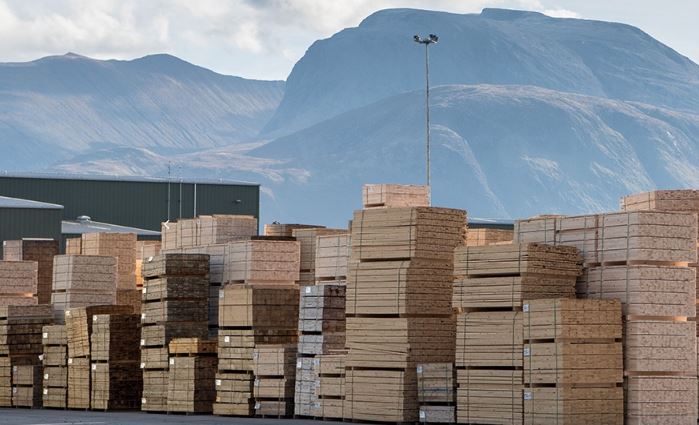
According to the latest figures from Timber Development UK (TDUK).,
volumes of all the main timber and panel products were much
higher in October 2024, resulting in an overall 15% uplift in
imports,
October¡¯s surge in demand is the latest positive sign in a year
of gradual improvements in volumes, which has seen the
cumulative deficit for 2024 to date, when compared with the
previous year, reduce to just 1.2% for all products.
Significantly, the volume deficit for softwoods was effectively
wiped out in October at just -0.3%, and OSB volumes have moved
ahead of last year¡¯s figures.
Softwood imports in October 2024 were around 11% higher than in
October 2023, driven by a near doubling of planed pine imports,
with around 27,000m3 more being imported this year compared to
last. Swedish imports accounted for the majority of this total,
with volumes from Latvia also higher. Sweden maintained its
position as the UK¡¯s biggest softwood supplying country,
providing 47% of all imports.
October also saw an 18,000m3 surge in the volume of temperate
species of imported hardwood plywoods, which includes alder,
beech and ash among other species, driven mainly from China,
with the monthly total 50% higher than any of the preceding
months of 2024.
Increases in softwood plywood imports this month were
proportionally greater than for any other timber product, with
Brazil supplying 10,500m3 more and Finland over 2,000m3 more.
Volumes of unworked OSB also increased sharply with an 11,000m3
rise in Latvian imports, as well as a 3,000m3 increase from
Germany. Average prices from Germany fell by 9% between June and
October, which may have had an impact on volumes, although
Latvian prices only fell by 2% and still enjoyed a significant
rise.
Hardwood imports throughout the first 10 months of 2024 were
around 18,000m3 below the same period in 2023. Just over half of
this shortfall was accounted for by lower volumes from the USA
and Cameroon, though the other five top supplying countries
collectively supplied almost 10,000m3 more volumes during the
same period, helping to offset some of this fall.
As part of the overall cumulative reduction of 18,000m3, the UK
imported around 9,000m3 less temperate hardwood, mostly
accounted for by lower volumes from the USA, Croatia and
Germany. The highest growth came from Romania with an increase
of 2,500m3, with increased volumes from Estonia and France as
well.
Imports of hardwood plywood have remained largely identical in
2024 compared with 2023, with China continuing to cement its
dominant position in the supply market. In October alone, three
out of every four cubic metres of hardwood plywood came from
China.
Nick Boulton, TDUK Head of Technical and Trade, explained: ¡°The
15% growth in import volumes seen in October 2024 was
exceptional when compared to the previous months, and it is
certainly positive news that the cumulative import deficit
between 2024 and 2023 is continuing to reduce.
¡°However, it is important to note that general sentiment in the
sector would suggest that this monthly surge is a singular
event, as opposed to a sign of significant sustained growth,
with volumes for November 2024 expected to return to more
'normal' levels.
¡°We¡¯ll know more once that data is available, but the industry
continues to face significant challenges as we enter 2025. New
housebuilding starts ¨C a significant source of timber demand ¨C
continue to be slow, and anecdotal data suggests that consumer
confidence is still low, making any significant uplift in RMI
work unlikely in the first quarter of 2021.
¡°Nevertheless, TDUK will continue to lobby the government to
consider timber as a primary low-carbon building material in its
plans to boost the housebuilding industry in the coming years,
and we remain positive that the long-term outlook for timber
remains strong.¡±
Source:
TDUK